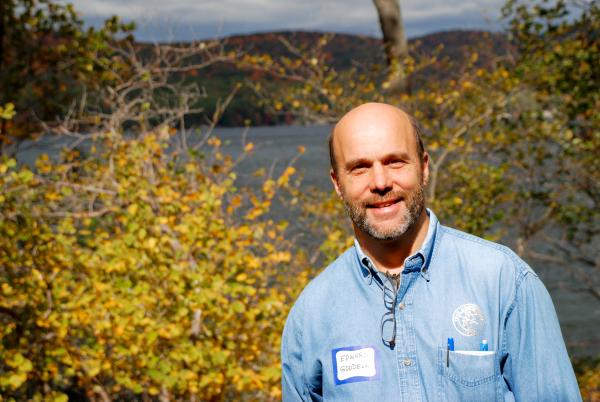Nature-based Recreation Is Economic Powerhouse
Title
Body
Outdoor recreation and access to nature are fundamental not only to a healthy lifestyle but to a prosperous one as well.
 Hikers and others who enjoy the outdoors probably don’t need convincing that protecting open space and maintaining parks are important quality of life issues, but with major deficit reduction debates occurring at all levels of government, it is important to remember just how important outdoor recreation is as a very efficient, very sustainable, and very BIG economic engine.
Hikers and others who enjoy the outdoors probably don’t need convincing that protecting open space and maintaining parks are important quality of life issues, but with major deficit reduction debates occurring at all levels of government, it is important to remember just how important outdoor recreation is as a very efficient, very sustainable, and very BIG economic engine.
A recent study by the Outdoor Industry Association, The Outdoor Recreation Economy* (links to studies mentioned in this article are below), shows that despite the effects of the Great Recession, almost 50% of Americans take part in outdoor recreation, spending $646 billion and directly supporting 6.1 million jobs nationwide. Outdoor recreation is defined as resource-based, human-powered sports, with running, fishing, biking, camping, and hiking being the five most popular.
These are really big numbers. The economic output is twice that of the pharmaceutical sector and involves more jobs than insurance and financial services combined. Citing U.S. Bureau of Labor statistics, the study reports that 768,000 American jobs depend on trail sports (for comparison, more jobs than there are lawyers--728,200--in the U.S). Astonishingly, Americans’ spend far more on bicycling gear and trips ($81 billion) than they do on airplane tickets and fees ($51 billion).
These are nationwide numbers, but there are local studies that demonstrate the importance of nature-based recreation for the New York-New Jersey region, too. A 2010 economic impact study of Minnewaska State Park, Mohonk Preserve, and Sam’s Point Preserve showed a $12 million economic impact and 358 jobs. A 2010 report of the Delaware Water Gap National Recreation Area showed that the approximately 5 million annual visitors spent more than $150 million and supported approximately 2,500 jobs. The 4.4 million visitors to New York State parks in the Palisades Region are estimated to have a $94 million impact.
Of course, we know that the personal fitness that accompanies outdoor recreation leads to health benefits and reduced obesity. Conversely, the lack of exercise and access to outdoor recreation contributes to the obesity epidemic. Fifty percent more Americans are obese today than 20 years ago and another 33% are predicted to be obese 20 years from now. The U.S. cost of obesity has been estimated at almost $150 billion annually, or about 9% of total medical expenditures. Outdoor recreation can’t solve this epidemic alone but a focus of the Trail Conference has been to bring access to open space closer to those who need it most.
Furthermore, nature-based recreation depends primarily on open space, which independently supplies a wealth of ecosystem services to society. The value of ecosystem services provided by natural habitat in the continental United States is estimated to be more than 10% of the U.S. GDP. The best local example of this is the protection of New York City watershed lands, which will costs $1-1.5 billion to protect compared to $6-8 billion to build a filtration plant plus $300 million annually to operate.. The outdoor recreation economy is both sustainable and robust, growing at “approximately 5% during the recession when many other sectors contracted.”
What Trail Conference members need to do is remind elected officials that it is about time they recognize how important nature-based recreation is to our wellbeing – economic, physical and emotional – and stop treating it as an afterthought. In this political season and in the budget battles ahead, it is up to Trail Conference members to make the case that this is a MUST HAVE policy rather than a Nice-to-Have one.
Here are some things our political leaders need do to reinforce this quiet economic giant:
Governor Cuomo
- Restore the Environmental Projection Fund budget for land acquisition back to 2009 levels ($60 million, at least!) from the current $17 million;
- Make sure that there is no gas drilling within the Catskill Park (i.e. inside the Blue Line).
Governor Christie
- Introduce legislation that provides a long-term funding mechanism for the Garden State Preservation Trust and New Jersey parks, forests, and wildlife management areas.
President Obama
- Don’t let U.S. Interior Secretary Ken Salazar and the Dept. of Interior overrule the Environmental Impact Statement finding that the PSE&G transmission line across the Delaware Water Gap and Appalachian National Scenic Trail should be stopped in its tracks.
When we enjoy our parks today, we are benefiting from the active advocacy of prior decades. We need to do our part now to ensure that nature-based recreation continues to benefit our region and its people.
Referenced Studies
The Outdoor Recreation Economy, 2012, Outdoor Industry Association, 2012: http://www.outdoorindustry.org/images/researchsites/default/files/OIA_OutdoorRecEconomyReport2012.pdf
Outdoor Recreation Participation Report, 2012, Outdoor Industry Association: http://www.outdoorindustry.org/participation-studies.php?action=detail&research_id=170
Bureau of Labor Statistics: http://www.bls.gov
“Economic Impact on the Local Economy of Minnewaska State Park Preserve, Mohonk Preserve, and Sam’s Point Preserve, May 2012,” by Business Opportunities Management Consulting, May 2010 http://www.shawangunkridge.org/documents/Shawangunk_Full_Report_6_15_10.pdf
Economic Benefits to Local Communities from National Park Visitation and Payroll, 2010, http://www.nature.nps.gov/socialscience/docs/NPSSystemEstimates2010.pdf
“The NYS Park System: An Economic Asset to the Empire State, 2009,” Political Economy Research Institute, University of Massachusetts-Amherst, Heintz, Pollin and Garrett-Peltier: http://www.peri.umass.edu/fileadmin/pdf/published_study/PERI_report_PTNY.pdf
“Obesity and Severe Obesity Forecasts Through 2030,” http://www.ajpmonline.org/websites/default/files/images/journals/amepre/AMEPRE_33853-stamped2.pdf
“The Economics Associated with Outdoor Recreation, Natural Resources Conservation and Historic Preservation in the United States,” By:Southwick Associates for the National Fish and Wildlife Foundation October 10, 2011: http://www.trcp.org/assets/pdf/The_Economic_Value_of_Outdoor_Recreation.pdf
